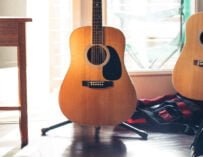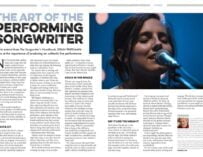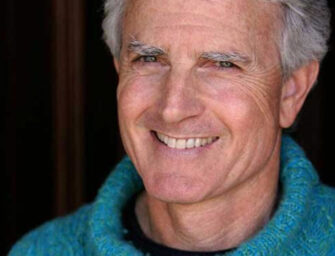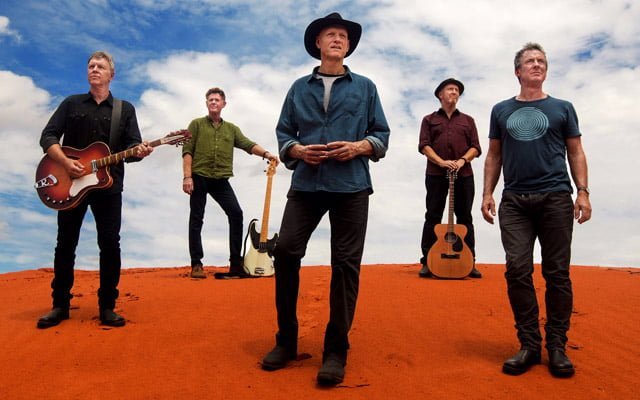
Shure Vocal Mastery: calling all vocalists in Europe, Middle East and Africa
Erika Footman and Steven Wilkinson present two workshops from Shure’s recent Vocal Mastery series offering tips for vocalists and singer-songwriters
Last month, microphone manufacturer Shure Europe launched Vocal Mastery – a new contest created to discover the best emerging singing talent from across Europe, the Middle East and Africa – which we announced here. The competition is open for entry until 22 December, so it’s all to play for, with the five winners each getting 1000 Euros-worth of Shure equipment and flown to London for two days for a masterclass at ACM and a recording session at Metropolis Studios.
As part of the Vocal Mastery competition platform, Shure are hosting a series of weekly workshops for vocalists, with useful singing techniques and tips on performance and recording. Below are two examples, but to watch the rest, take a look at: shure-vocal-mastery.eu/category/workshops/
Performance
Some people find it extremely easy to be a big performer and very open and very comfortable with the crowd and how with others it might not come as easy. You might find that they’re a little more timid and not as confident as those others. In this workshop, Erika Footman gives us a handful of great tips to overcome the fear of being on stage and how to become a performer.
“Rather than trying not to be yourself, try to be a more confident part of yourself – to put your mind-set in the right place. If I was to walk on stage with my shoulder’s rounded, looking at the floor and being like, ‘Hi, my name is Erika’, it doesn’t really put anyone at ease. But, if I was to come on to the stage with my shoulder’s back, I’m not being arrogant, I just have my shoulder’s back and I walk on stage and say, ‘Hi, my name’s Erika and I’m going to sing a song for you today’. Although it might not seem like a big deal, just putting your shoulder’s back and feeling good about yourself will immediately set you up to make a really good show and will also put your audience at ease, and make them willing and wanting to watch you. Nobody wants to see any performer fail. Everyone goes there to watch a good show and have a great time. Everyone wants to see you succeed, so just remember that when you’re going out on stage, instead of worrying about what people might think.
“The next thing are these arms. Every day, we use our arms and it’s very natural. But when you’re on stage, for some reason, a lot of singers find that their hands are clamped down by their sides and they don’t really know what to do with them. Think about, what I like to say is, ‘giving us a little bit of armpit’ – just opening up the arms a little bit. You’re naturally using your whole body and your whole arm, not just using that lower section. By opening it up and giving a little bit of armpit you’re actually opening up your body, opening up to the audience and making sure you’re connecting with them as well.
“Another thing you might want to think about is using the stage, using the depth of the stage, using the sides of the stage. If you’re in a rock band, or a high energy band, it’s fun to run around on stage, jumping up and down. It’s great. However, if you’re a singer-songwriter or a singer playing your own stuff, you’re stuck to one space. But even if you’re stuck behind a piano, or if you’ve got a guitar that’s plugged in, there are loads of things you can do too. For example, if you’ve got a guitar you can actually use your body a lot more. You’ve also got the mic stand, so you can actually have your hand on the mic stand if you want to. This is a really nice shape to have on stage. Amy Winehouse used the mic stand a lot – she would be very stationary on the mic stand, but she would always be holding it. She’d be pulling it away, pulling it to the side. She might even be just standing casually using it as something to lean on as well.
“Really think about shapes. For me, as a performer shapes are really important. If I have a shape that I’m creating, whenever people are watching, then something else is happening, there’s something else you can see. This totally depends on your genre, depends on how comfortable you are on stage and performance is extremely subjective, so this is just stuff you can think about; stuff that you can try out. Maybe try this at home: use a hairbrush and sing in front of the mirror and actually see what looks good. See what doesn’t look good. It might seem a little childish, but actually some of the best performers started like that – just by being free. Just by being really open with their bodies and open with their minds and trying stuff out. If you don’t want to do it at your gig, do it in a safe environment either at a rehearsal or a gig and just have fun with it.”
Recording Vocals
How should a singer prepare before going into a recording studio? What type of microphone should you be using? How do you get the right ‘feeling’ across in a song? What else is important? In this workshop, Steven Wilkinson from the Academy of Contemporary Music tackles these questions and more on recording vocals in a studio.
“To start, vocalists, before you hit that studio you’ve got to prepare for it. The first thing you’ve got to think is, ‘Do I go out on a bender before I go to the studio?’ Most of the time, it’s a no. Second big tip is to think about bringing a lyric sheet with you. Not necessarily for you, because having a lyric sheet in front of you can be a big hindrance – it’s actually more for the producer. So when you’re performing, they can track where you are in the song and give you feedback on any words you might need to do again or sing slightly differently. And the third thing is to know the song. Even if you are doing a cover or a song you think you know, or perhaps it’s a fairly new song, you should know the lyrics inside and out. It really can slow down a vocal session if you haven’t got those lyrics prepared.
“When you’re in the studio, it’s about experimentation. Your starting point is what mic to choose and it’s very much up to experimentation between you and the producer. You can start by taking the verse or the chorus and doing a couple of takes with a few different types of microphone. A £50 mic might sound great with a vocal or a £5000 mic might sound great with a vocal. It’s up to you guys to record small parts, listen back and then decide which one works for the track and, trust me, you’ll know which one sounds best with your voice.
“Your other consideration is the mic choice itself. Not only the price is a factor, but also the design, model and type. The two main types that you’re going to find in most studios are a condenser and a dynamic microphone. Ironically, the dynamic is a fairly flat mic, but is very good at handling high pressure sound levels. For instance, if you’re doing any ‘screamo’ vocals, or even spoken word. Dynamic mics can be very good for this. But if you’re looking for that more Mariah Carey, Whitney Houston top-end brightness where you can hear your breaths and saliva, then you want to go with a condenser microphone. Nice and bright, lots of fidelity, but not as good as handling high sound pressures. You must be aware of this when making your decision.
“When you’re in the studio, it’s very important to have the correct headphone mix and it’s up to you to communicate with the producer exactly what level you require in your headphones. If you’re a singer that likes to perform with reverb or delay, let the producer know. If you’re too loud or too quiet in your headphones, this can cause you to sing flat or sharp, which is no good to anyone. It’s also important that you use closed-back headphones whilst tracking, especially if you’re going to need a loud volume in your track, or if you’re going to do the one-ear on, one-ear off technique, as this can cause spill in to the microphone which isn’t very useful.
“And lastly, how you’re feeling comes across on the record. So, if you want to sing a sad song, you have to be in a sad place emotionally. If you want it to come across as fun and happy, you’ve got to feel that way and sing that way.”
For more workshops and to enter the Vocal Mastery competition, go to shure-vocal-mastery.eu




































Related Articles